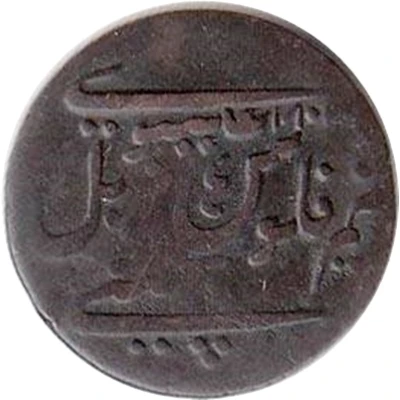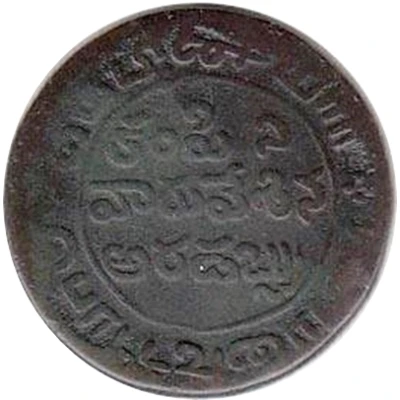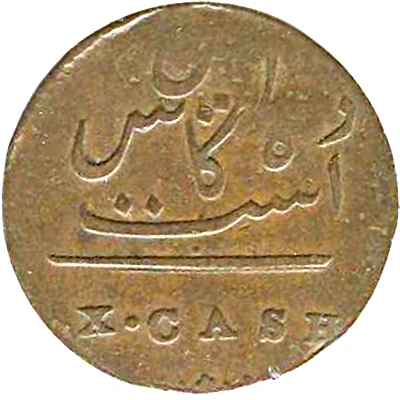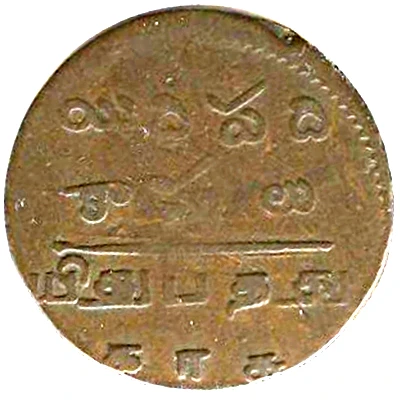


© Vaikunta Chary
½ Dub 10 Cash, ½ Falus
1807 year| Copper-nickel | 5.15 g | 22.7 mm |
| Issuer | Madras Presidency (British India) |
|---|---|
| Type | Standard circulation coin |
| Year | 1807 |
| Value | ½ Dub (1⁄336) |
| Currency | Pagoda (1639-1817) |
| Composition | Copper-nickel |
| Weight | 5.15 g |
| Diameter | 22.7 mm |
| Shape | Round |
| Demonetized | Yes |
| Updated | 2024-10-05 |
| Numista | N#80280 |
|---|---|
| Rarity index | 92% |
Reverse
Legend inside circle in Telugu (Kampini varuvesana, Ara dabbu), Within two outer circles in Tamil (Arai Dabbu)
Translation: Honourable Company, half dub.
Edge
Plain
Comment
- Designed by Benjamin Roebuck. Madras mint masterInteresting fact
The ½ Dub coin from Madras Presidency (British India) was used as a currency in India during the 19th century, and its design featured a unique blend of Indian and British elements. The obverse side of the coin bore the image of a lion, which was a symbol of the British East India Company, while the reverse side featured a depiction of a Hindu deity, Lord Vishnu, signifying the cultural influence of the Indian subcontinent. This coin is a rare and fascinating example of the cultural exchange that took place between India and Britain during the colonial era.



